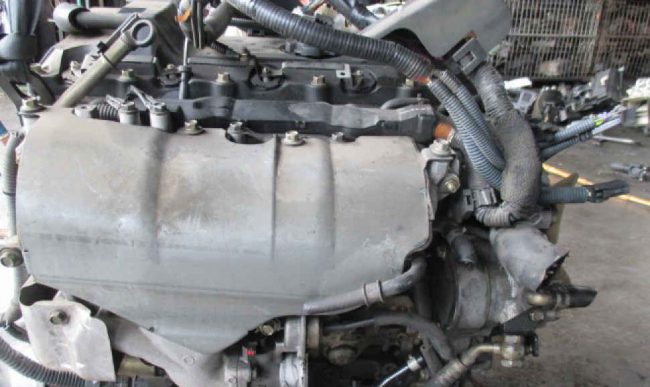
Engines Nissan ZD30DDTi, ZD30DD
Content
During its existence, Nissan has produced a huge number of cars and accessories for them. The largest number of laudatory reviews are the motors of the concern, which are distinguished by excellent quality and good functionality for their price.
If gasoline units have received due recognition around the world, then the attitude towards Nissan diesel engines is still ambiguous. Today our resource decided to highlight the diesel engines of the Japanese. We are talking about power plants with the names "ZD30DDTi" and "ZD30DD". Read about their design, technical characteristics and reliability below.
The concept and history of the creation of motors
ZD30DDTi and ZD30DD are fairly well-known Nissan diesel engines. The concern took up their design in the second half of the 90s, but put into active production only in 1999 and 2000. At first, these units had a lot of flaws, so they were seriously criticized by the automotive community.
Over time, Nissan has corrected the status quo by improving and significantly refining the ZD30DDTi and ZD30DD. Motors with such names released after 2002 are not something terrible and unpleasant for motorists. Redesigned ZD30s are quality and functional diesels. But first things first…
ZD30DDTi and ZD30DD are 3-liter diesel engines with power in the range of 121-170 horsepower.
They were installed in Nissan minivans, SUVs and crossovers until 2012. After that, the production of the considered internal combustion engines was discontinued due to their moral and technical obsolescence.
The concept of the ZD30s is no different from their counterparts of the 00s of this century. Diesel engines were built on the basis of an aluminum block and a similar head with two shafts, gas distribution of the DOHC system and four cylinders.
The differences between the ZD30DDTi and ZD30DD lie in their final power. The first engine has a turbine and an intercooler, and the second is a typical aspirated engine. Naturally, the ZD30DDTi is more powerful than its counterpart and has a reinforced design.
In other aspects of the construction, the two ZD30s are completely identical and are typical diesels. Their quality is decent, but this only applies to units manufactured in 2002 and younger. More older models of motors have a number of flaws, so they can cause a lot of trouble during operation. You shouldn't forget about it.
Technical specifications
| Manufacturer | Nissan |
|---|---|
| Motor brand | ZD30DDTi/ZD30DD |
| Years of production | 1999-2012 |
| A type | turbocharged/atmospheric |
| Cylinder head | aluminum |
| Food | multi-point injection with injection pump (typical diesel injector on nozzles) |
| Construction scheme | in-line |
| No. of cylinders (valves per cylinder) | 4 (4) |
| The piston stroke, mm | 102 |
| Cylinder diameter, mm | 96 |
| Compression ratio, bar | 20/18 |
| Engine displacement, cubic meters cm | 2953 |
| Power, HP | 121-170 |
| Torque, Nm | 265-353 |
| Fuel | DT |
| Environmental standards | EURO 4 |
| Fuel consumption per 100 km of track | |
| - in the city | 12-14 |
| - along the track | 6-8 |
| - in mixed driving mode | 9-12 |
| Volume of oil channels, l | 6.4 |
| Type of lubricant used | 10W-30, 5W-40 or 10W-40 |
| Oil change frequency, km | 8-000 |
| Engine resource, km | 300-000 |
| Modernization options | available, potential - 210 hp |
| Serial number location | the rear of the engine block on the left, not far from its connection with the gearbox |
| Equipped models | Nissan caravan Nissan Elgrand N Nissan safari Nissan Terrano Nissan Terrano Regulus |
It is possible to clarify the technical characteristics of specific ZD30DDTi or ZD30DD only in the documentation attached to them. This is due to periodic modifications and improvements to the engines, which provoked some variation and heterogeneity in their functional parameters.
Repair, maintenance and tuning
Released before 2002 and not converted by craftsmen ZD30DDTi, ZD30DD is a real storehouse of faults. Active exploiters of these motors note that everything that can break in them has broken and breaks. In fact, only a complete search and correction of factory defects make normal motors out of the oldest ZD30DDTi, ZD30DD.
As for their younger counterparts, they cannot deliver significant problems during operation. Among the typical malfunctions of the ZD30s since 2002, we highlight:
- Poor performance in cold seasons, which is typical for all diesel engines.
- Oil leaks.
- Noise from timing belt.
The noted problems are solved, like any others with the motors in question, by contacting any service station. Due to the simplicity and typical design, any good craftsman can repair the ZD30DDTi and ZD30DD.
It is not difficult to avoid problems with these internal combustion engines - it is enough to operate them in normal mode and follow the maintenance regulations.
In this case, the units will completely roll back and even exceed their resource of 300-400 thousand kilometers. Naturally, you should not forget about the overhaul. It is desirable to carry it out every 100-150 kilometers.
Tuning ZD30DDTi and ZD30DD is not a good idea. If it is pointless to unwind already turbocharged samples further, then it is simply better not to touch the aspirated one.
Despite all the improvements, the ZD30s are not ideal in terms of technical components, which is why any upgrades have a bad effect on their resource. That is why our resource does not recommend improving the monitored internal combustion engines. Nothing good will come of these events.

